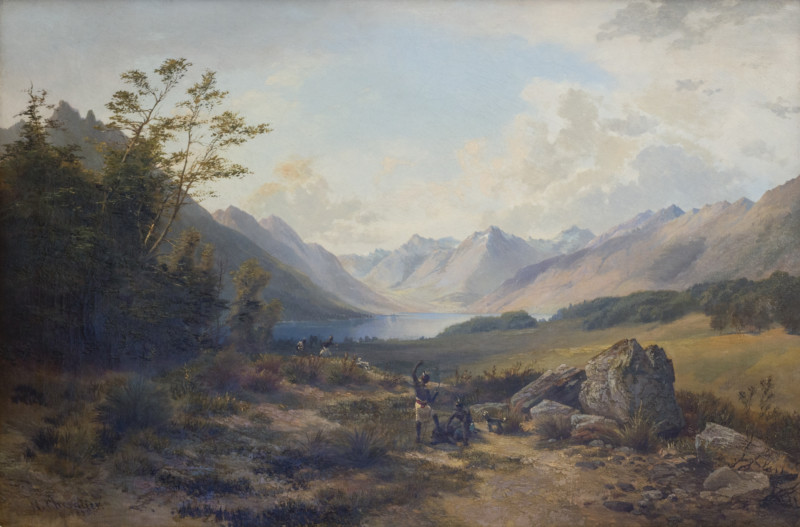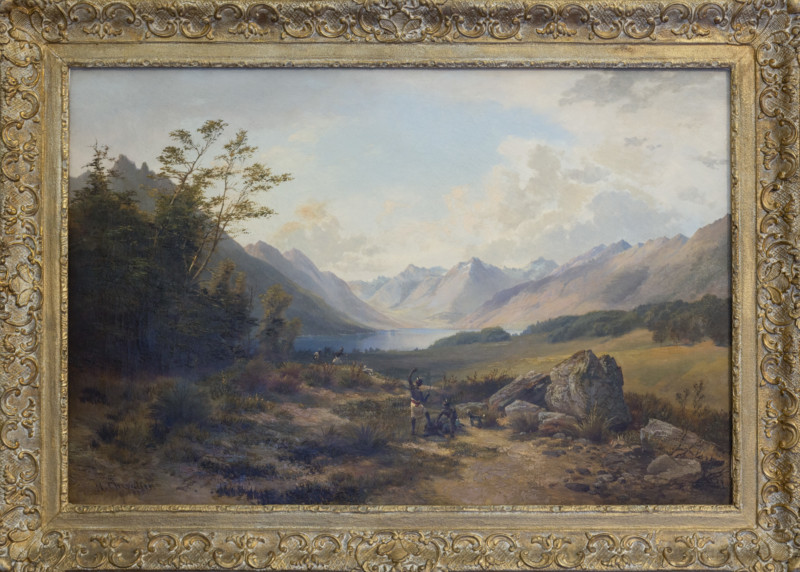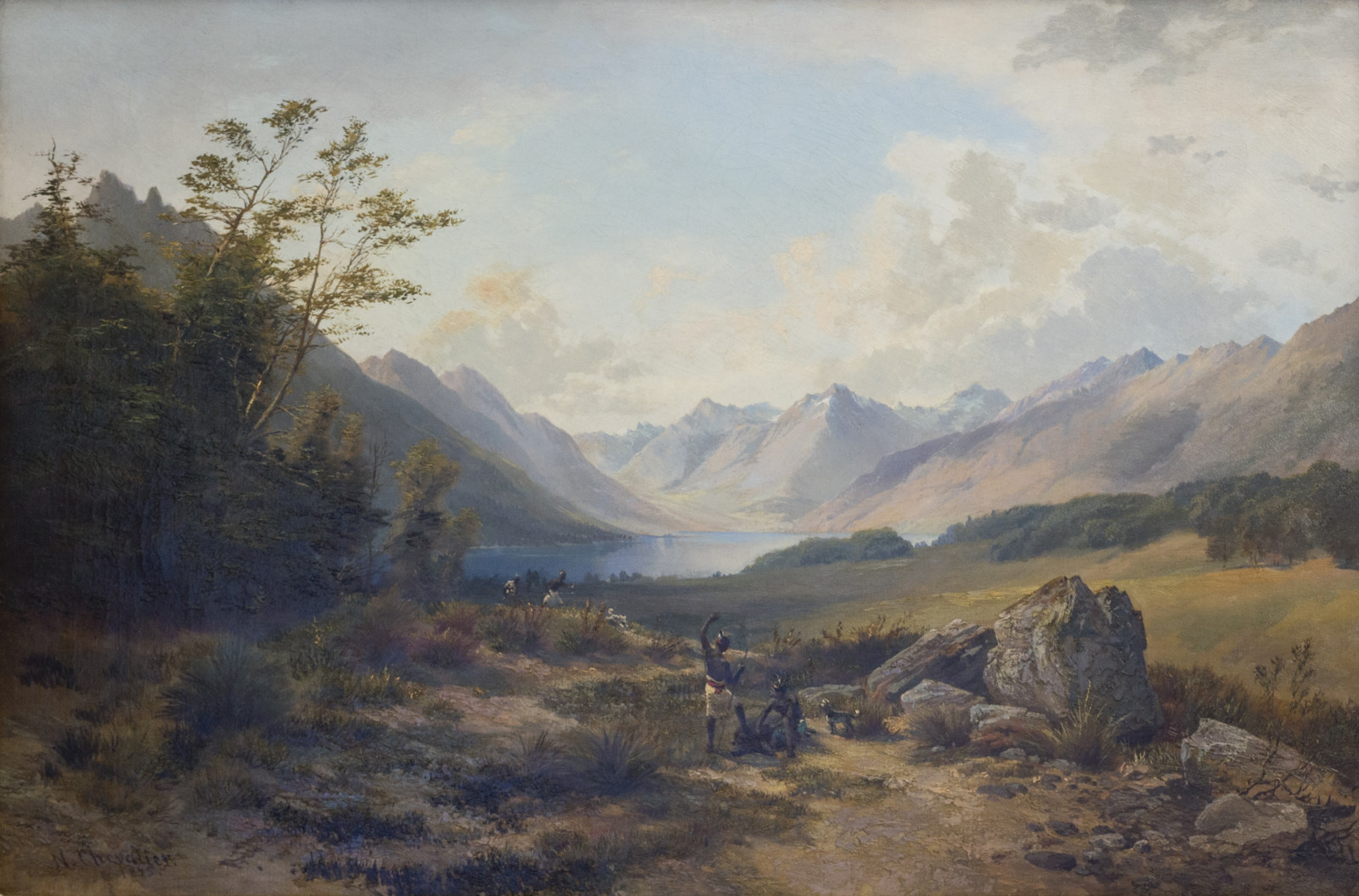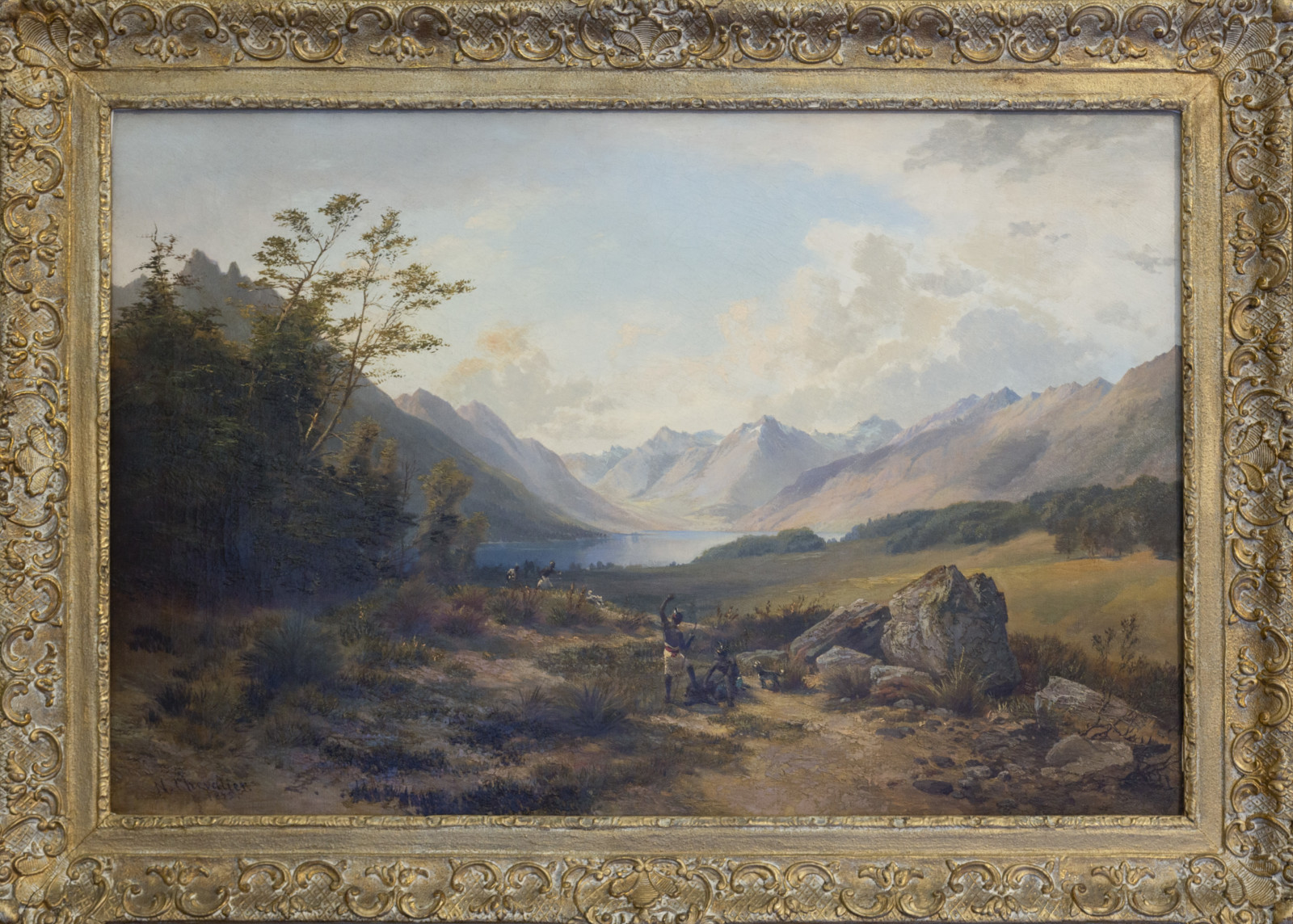CHEVALIER, Nicholas;
Māori Hunting Party, Lake Mavora, Otago
1875
Oil on canvas
495 x 750mm (image); 650 x 910mm (frame)


The following two texts were written for Te Huringa/Turning Points and reflect the curatorial approach taken for that exhibition.
Peter Shaw
Chevalier first visited Aotearoa in 1865, having obtained a travel grant from Otago Provincial Council to journey through the province drawing and painting the landscape. The intention was that his work would then be shown at the Paris Exhibition of 1867 and might attract settlers to the area. In 1866, Canterbury Province made him a similar grant.
Accompanied by his wife, Chevalier visited the West Coast, traveling via Ōtira Gorge to Hokitika. Drawings from this trip were later shown in Ōtautahi, Ōtepoti, and Te Whanganui-a-Tara. In 1866, they both returned to Melbourne but Chevalier came back to Aotearoa in 1868, exploring the Hutt Valley, the Rimutakas and travelling to Whanganui. There, he found the town under siege and recorded the sights he witnessed in a series of vivid sketches.
When he was living in London ten years later, Chevalier painted this oil from a portfolio of some 70 sketches he had made in the area between the rivers Mararoa and Waiau. The small but highly active group of Māori hunters is dominated by the surrounding landscape rendered in sombre but accurate tones likely to have been recorded by the artist in his original sketch.
Jo Diamond
An exceptionally beautiful scenic backdrop cannot distract us from the Māori group in the foreground. Their relatively indistinct figures seem somewhat at odds with the highly detailed mountains, lake, and plant life that surround them, yet their activity is clearly defined by the painting’s title. Chevalier’s sketchbooks recorded scenery more often than human activity. These Māori figures, therefore, quite possibly provided additional interest, even though Chevalier may have been more focussed on the landscape. Indeed, his ‘adding in’ of this hunting scene would have easily fitted into the stereotyped impressions of Māori in the minds of viewers who may never have visited Aotearoa.
The Hunting Party nevertheless reminds us of the long-time presence of Māori people in the land. Their lifestyles (including diet) were most often based on seasonal change. While permanent, village-like settlements were established, groups often shifted location, following a harvesting routine gained through extensive knowledge of the natural environment and its resources. This was a vibrant culture that in adapting to climatic changes also acknowledged time-honoured traditions. Such a counter-argument to European imperialism may have escaped the early colonial audience. It should not escape us.
Inscriptions
N. Chevalier. / 1875. [l.l.]Exhibition History
Te Huringa/Turning Points: Pākehā Colonisation and Māori Empowerment, Sarjeant Gallery Te Whare o Rehua, Whanganui, 8 April to 16 July 2006 (toured)
Provenance
1996–
Fletcher Trust Collection, purchased December 1996
–1996
Unknown


